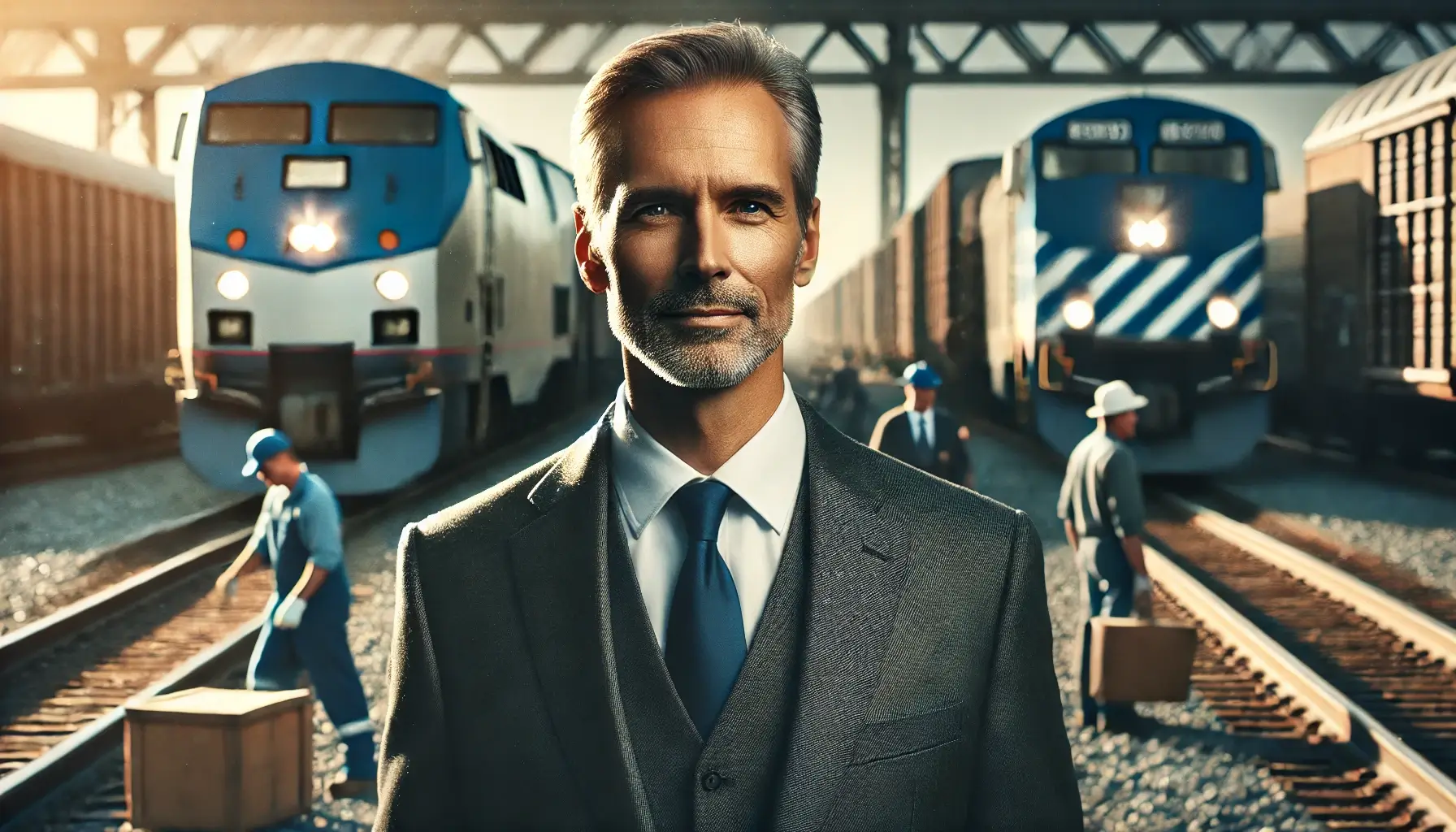In the annals of American engineering and industrial progress, certain names resonate with the thunderous echo of iconic projects or revolutionary inventions. Henry Ford transformed transportation; Thomas Edison illuminated the world; the Roeblings connected continents with their bridges. Yet, the very fabric of our modern existence—the silent, reliable functioning of our homes, cities, and industries—rests upon a foundation built by less-heralded figures. Among these quiet titans is Claude Edward Elkins Jr., a man whose life and work became inextricably linked with the development and refinement of one of the 20th century’s most critical, yet overlooked, inventions: the electric motor. His story is not one of a solitary genius with a flash of inspiration, but of a dedicated engineer, a visionary businessman, and a steadfast leader whose cumulative contributions helped electrify America and power its industrial might.
Elkins’ journey began in the heartland of America, in Columbus, Indiana, a city that would serendipitously become a crucible of modern architectural and industrial design. Born in the early 20th century, his formative years coincided with a period of unprecedented technological acceleration. The world was shifting from steam and manual labor to electricity and automation. This transformation was powered by the electric motor, a device that converted electrical energy into mechanical rotation, and it was in the optimization, manufacturing, and application of this device that Elkins would make his mark.
His professional destiny became intertwined with the Columbus-based company, Reliance Electric. Founded in 1904, Reliance grew by focusing on a simple but powerful premise: providing robust, reliable, and innovative electric motors and drives for industry. Elkins joined the company and, through a combination of technical acumen, strategic foresight, and innate leadership qualities, ascended its ranks. His career trajectory mirrored the expansion of American industry itself. He was not merely an observer of this growth but an active participant and catalyst.
The Engine of Industry: Elkins’ Technical and Managerial Philosophy
Claude Elkins’ impact can be understood through three interconnected spheres: technical innovation, strategic corporate leadership, and a profound commitment to the human element of industry.
1. The Pursuit of Reliability and Precision: At its core, an electric motor is a deceptively simple machine. Yet, its efficiency, durability, and adaptability are parameters that separate adequate performance from transformative industrial capability. During Elkins’ tenure, particularly as he moved into executive roles including Vice President of Manufacturing and eventually President of Reliance Electric, the company prioritized engineering excellence. Under his leadership, Reliance became synonymous with quality. The company invested heavily in research and development, focusing on creating motors that could withstand the punishing demands of continuous operation in steel mills, mining operations, manufacturing plants, and later, in the sophisticated machinery of the aerospace and defense industries.
Elkins understood that reliability was not an abstract concept; it was the bedrock of customer trust and industrial productivity. A motor failure on an assembly line could mean thousands of dollars in lost production. A failure in a critical ventilation system or water pump could have safety implications. Therefore, the manufacturing processes overseen by Elkins emphasized precision tolerances, superior materials, and rigorous quality control. This relentless focus on building products that lasted cemented Reliance’s reputation. It was a philosophy that aligned perfectly with the mid-century American industrial ethos, where “built to last” was a badge of honor. Elkins was not just selling motors; he was selling certainty.
2. Strategic Vision: From Components to Systems: One of Elkins’ key insights was recognizing that the motor alone was not the endpoint. The true value lay in how the motor was controlled and integrated into a larger system. This foresight led Reliance to expand beyond being a mere motor manufacturer into a provider of complete drive systems, including variable-speed drives and control panels.
This shift was monumental. A fixed-speed motor is a blunt instrument. A motor paired with a sophisticated control system becomes a precision tool, allowing operators to finely tune speed and torque to match exact application requirements. This improved efficiency, reduced wear and tear, and enabled more complex automated processes. Under Elkins’ guidance, Reliance developed and acquired technologies that positioned it at the forefront of this systems approach. This move anticipated the rise of automation and process control that would define the latter half of the 20th century. By understanding the broader ecosystem in which his products operated, Elkins ensured that Reliance remained not just relevant, but essential, as industry evolved.
3. The Human Capital: Leading a Workforce and a Community: Perhaps the most enduring aspect of Claude Elkins’ legacy was his commitment to the people who built Reliance Electric. He was a leader who believed in the dignity of work and the importance of the shop floor. In an era before modern human resources theories became commonplace, Elkins practiced a form of pragmatic, respectful leadership. He was known to walk the factory floors, engaging with engineers and assembly line workers alike. He understood that the ideas for improving a process or fixing a persistent problem often came from the hands-on experience of the workforce, not just from the executive suite.
This management style fostered a remarkable sense of loyalty and corporate culture within Reliance. In Columbus, Indiana, Reliance Electric was more than a company; it was a pillar of the community. It provided stable, well-paying jobs for generations of families. Elkins, as a leader of the company, understood this responsibility. His leadership extended beyond the factory gates, contributing to the economic and social vitality of Columbus. This symbiotic relationship between a corporation and its hometown was a hallmark of post-war America, and Elkins was a stalwart steward of this model. He proved that a company could be fiercely competitive and technologically advanced while still maintaining a human scale and a sense of civic duty.
The Reliance T-Line Motor: A Concrete Legacy
While Elkins was an executive and not typically a hands-on designer, his leadership directly enabled one of Reliance Electric’s most significant and enduring contributions to industry: the development and launch of the Reliance T-Line AC motor in the 1960s. The T-Line was not merely another product; it was an industry standard-setter.
Prior to its introduction, the electric motor market was fragmented. Designs, dimensions, and performance characteristics varied significantly between manufacturers, making replacements and upgrades a logistical challenge for plant managers and maintenance engineers. The Reliance T-Line was engineered to be a premium, high-efficiency motor that also established a new benchmark for standardization and reliability. It incorporated the latest advancements in insulation materials, bearing technology, and cooling design.
The success of the T-Line was a direct result of the corporate culture Elkins helped cultivate. It required close collaboration between design engineers, manufacturing specialists, and marketing teams—a synergy that only thrives under leadership that values all facets of the business. The T-Line motor became ubiquitous in American industry. For decades, its distinctive blue paint job (on many models) was a familiar sight in factories across the nation. It powered conveyor belts, pumps, fans, and machine tools, becoming the silent, dependable heart of countless industrial processes. When engineers specified a “Reliance Duty Master” (a specific line within the T-Line family), they were specifying a product they knew would perform flawlessly for years, even under demanding conditions. This trust was the tangible result of Claude Elkins’ philosophy of quality and reliability.
The Larger Context: Powering the American Century
To fully appreciate Elkins’ contributions, one must view them against the backdrop of the “American Century.” The post-World War II economic boom was fueled by manufacturing. From automobiles to household appliances, the American industrial machine was the envy of the world. This machine ran on electricity, and the primary interface between electrical power and mechanical action was the electric motor.
Companies like Reliance Electric, under leaders like Claude Elkins, were the enablers of this prosperity. They provided the essential components that allowed for automation, increased production speeds, and improved working conditions. The rise of consumer goods, the expansion of infrastructure, and the strength of the national defense industrial base all relied on the availability of high-quality, industrial-grade electric motors.
Furthermore, Elkins’ career spanned a period of significant corporate evolution. In 1967, Reliance Electric was acquired by Exxon Corporation, a move that reflected the growing intersection of energy producers and energy users. Navigating this transition from a family-influenced, Midwestern firm to a subsidiary of a global oil giant required immense skill and diplomacy. Elkins’ steady hand during this period ensured that Reliance’s core identity and commitment to quality were preserved, even as it gained access to greater resources for expansion. He successfully bridged two distinct eras of American capitalism.
The Quiet Legacy of an Industrial Steward
Claude Edward Elkins Jr. passed away in 1981, but his legacy is woven into the infrastructure of modern life. Unlike an inventor who patents a single device, his contribution was cumulative and systemic. It is present in the water that flows from our taps, pumped by reliable motors; in the goods that fill our stores, manufactured on automated lines; and in the climate-controlled buildings we inhabit.
His story is a powerful reminder that history is not made by famous names alone. The smooth functioning of our technological society depends on a chain of contributions that includes the visionary at the drafting board, the skilled worker on the assembly line, and the principled leader in the corner office who creates a culture where excellence can flourish. Elkins excelled in this latter role. He was an architect not of soaring structures, but of industrial resilience and reliability.
In his hometown of Columbus, Indiana, a city renowned for its collection of modernist architecture thanks to the patronage of another industrialist, J. Irwin Miller, the legacy of industry is less visible but no less important. The factories that housed companies like Reliance Electric were the economic engine that made such cultural patronage possible. Claude Elkins Jr. was a key steward of that engine.
He embodied a era of leadership that has, in many ways, faded: the leader as a long-term builder, deeply connected to both product and people. He demonstrated that true innovation is not always a dramatic breakthrough, but often a relentless, daily pursuit of better quality, greater efficiency, and deeper trust. In powering the machines that built modern America, Claude Edward Elkins Jr. earned his place as one of the unassuming, yet indispensable, architects of the world we live in today. His was a life of quiet impact, a testament to the idea that the most essential foundations are often those we never see, but upon which everything else depends.

